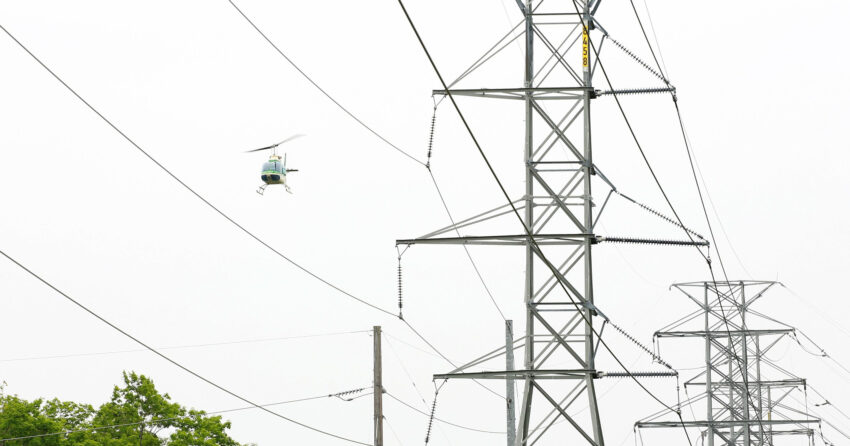When a widespread power outage occurs and high-voltage transmission lines require immediate repairs, the electric utility often sends a skilled technician to the location by helicopter to speed the repair process. Helicopters, along with drones, are also utilized for monitoring, inspecting, and maintaining transmission towers and power lines. Linemen often work on transmission lines that are not de-energized, allowing for an uninterrupted power supply.
Because of the importance of identifying the correct tower, aerial surveillance markers must be readily visible for many years despite continual expose to sun, rain, snow, sleet, wind, and even corrosive elements like acid rain. Unfortunately, traditional painted and laminated identification products frequently fade or delaminate when continually exposed to outdoor weather or punishing conditions. Supposedly durable products designed for this purpose can also become unreadable over ten years or more.
Even operators attempting to view aerial markers through the drone’s high-resolution camera may find it difficult without flying closer than needed to the power lines, increasing the risk of collision and electrical arcing, particularly when strong winds are present.
The alternative is more durable signage made of high impact polyolefin plastic like the EVERLAST® brand from Tech Products, a manufacturer of identification products for the electric and gas utilities, telecommunication and cable companies, OEMs and pipeline companies. These signs and tags display text or pictograms that are permanently embedded through the entire thickness of the substrate. UV stabilizers and antioxidants are added to provide complete protection and weather resistance in all climates.
For optimal visibility at a distance, polyolefin plastic aerial observation tags come in sizes ranging from 6 inches to 12 inches, the largest in the industry. Entergy, a Fortune 500 integrated energy company, has used this type of signage on their transmission towers since 1989.
Polyolefin plastic signage is also used to identify nearby lines or to indicate unexpected changes in the elevation or direction of the line. For the helicopter crew, crossing lines can be very dangerous, particularly in low visibility conditions. To prevent this from happening, signs are posted. Within the industry, it is typical to clearly indicate a power cable crossing with signage marked by an “X” or a change in direction with an arrow.
Signage is necessary to signify specific levels of danger or required precaution with OSHA compliant color codes as well. AC transmission lines can carry transmission voltages from 69 kv up to 765 kv, which can be extremely dangerous, and even fatal. As a result, electric utility transmission and distribution identification products such as safety signs, tags, and markers are critical to safe, efficient operation, maintenance, and repair. These brief warnings or instructions, comprised of letters, numbers, and symbols, must effectively convey key information to personnel.
To further increase safety while mitigating risk and liability, towers and other restricted areas also need to display warnings of the deadly electrocution and fall hazards to deter unauthorized access or attempts to climb the structure from the ground.
For more information, call 1-800-221-1311; email info@techproducts.com; or visit www.techproducts.com.

